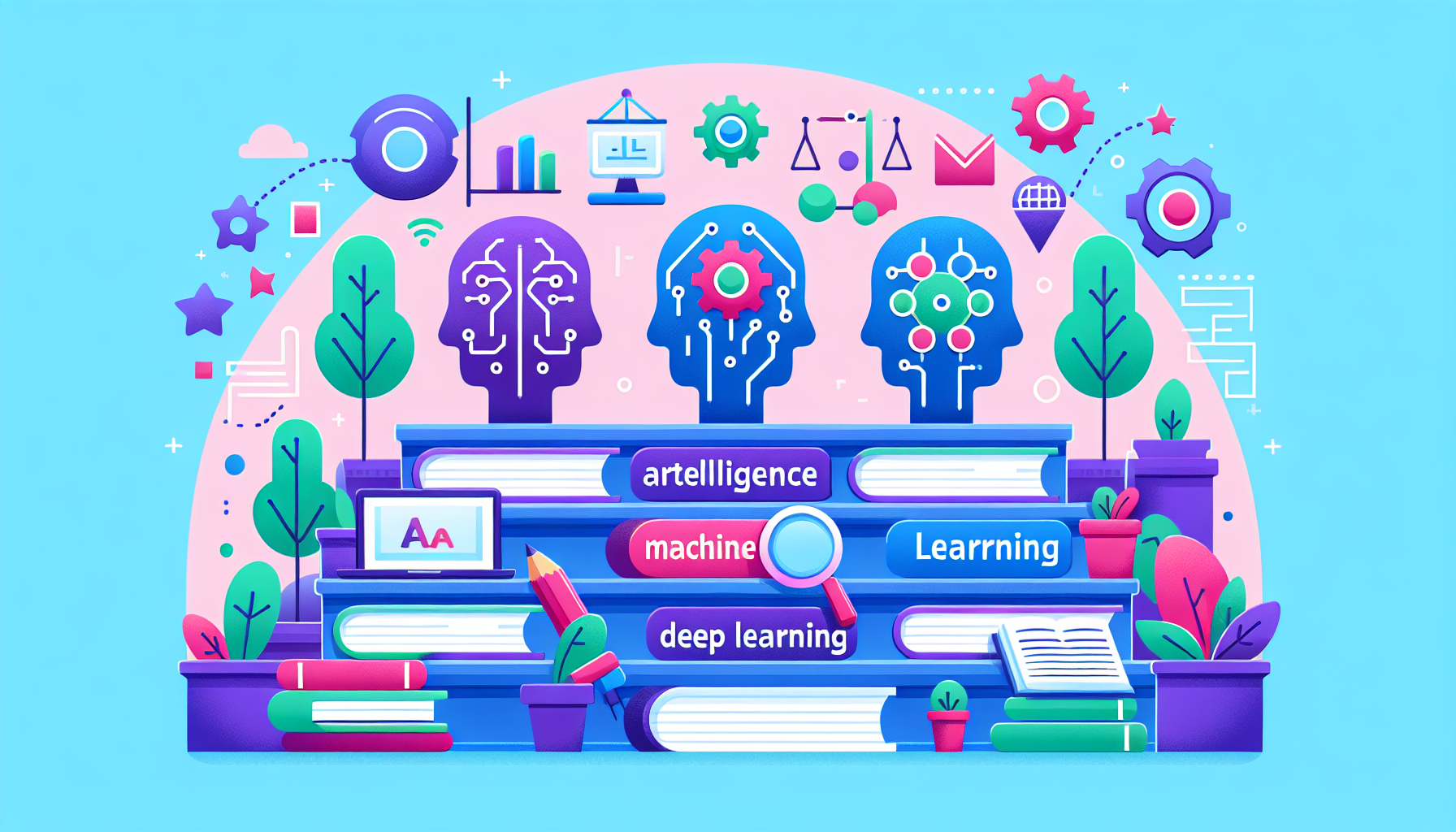Artificial Intelligence (AI), Machine Learning (ML), and Deep Learning (DL) are terms that are often used interchangeably in today’s tech-driven world. However, they represent different concepts and technologies that have unique applications, methodologies, and implications. This blog post aims to clarify the distinctions among these three fields, helping you gain a better understanding of how they relate to one another and their roles in the rapidly evolving landscape of technology.
What is Artificial Intelligence?
Artificial Intelligence is the broadest concept of the three. It refers to the capability of a machine to imitate intelligent human behavior. AI encompasses a variety of techniques and methods, including rule-based systems, expert systems, and even robotic process automation. The goal of AI is to create systems that can perform tasks that typically require human intelligence, such as reasoning, learning, problem-solving, understanding natural language, and perception.
AI can be categorized into two types: Narrow AI and General AI. Narrow AI refers to systems that are designed to perform a specific task, such as voice assistants like Siri or Alexa, while General AI refers to machines that possess the ability to perform any intellectual task that a human can do. As of now, we only have Narrow AI, as General AI remains a theoretical concept.
What is Machine Learning?
Machine Learning is a subset of AI that focuses specifically on the idea that systems can learn from data, identify patterns, and make decisions with minimal human intervention. Essentially, ML enables computers to improve their performance on a task over time through experience.
In machine learning, algorithms are trained on datasets to recognize patterns and make predictions based on new data. There are several types of machine learning, including:
1. Supervised Learning: In this approach, the model is trained on a labeled dataset, which means that the input data is paired with the correct output. The model learns to make predictions based on this input-output relationship. Common applications include spam detection in emails and image recognition.
2. Unsupervised Learning: Here, the model is given data without explicit instructions on what to do with it. The goal is to uncover hidden patterns or structures within the data. Clustering and association algorithms are common in this category, such as customer segmentation in marketing.
3. Reinforcement Learning: This type of learning is based on the idea of agents that take actions in an environment to maximize cumulative rewards. The agent learns by receiving feedback in the form of rewards or penalties. This approach is commonly used in robotics and gaming.
What is Deep Learning?
Deep Learning is a specialized subset of machine learning that utilizes neural networks with many layers (hence the term “deep”). It is particularly effective in dealing with large amounts of unstructured data, such as images, audio, and text. Deep learning mimics the way the human brain operates, allowing systems to learn and make decisions in a more complex manner.
Deep learning models, especially convolutional neural networks (CNNs) for image processing and recurrent neural networks (RNNs) for sequence prediction, have shown remarkable success in various applications, including self-driving cars, language translation, and facial recognition. The success of deep learning has been fueled by the availability of vast datasets and powerful computational resources, such as Graphics Processing Units (GPUs).
Key Differences
Now that we have defined AI, ML, and DL, let’s summarize the key differences:
1. Scope: AI is the overarching concept that encompasses both machine learning and deep learning. Machine learning is a subset of AI, and deep learning is a further subset of machine learning.
2. Techniques: AI employs various techniques not solely based on learning from data, such as rule-based systems. In contrast, machine learning is exclusively focused on algorithms that learn from data. Deep learning uses complex architectures of neural networks to process data.
3. Data Dependency: ML can work with smaller datasets and still provide meaningful results, but deep learning typically requires large amounts of data to perform well. The complexity of deep learning models necessitates extensive training data to avoid overfitting.
4. Computational Power: Deep learning models are often more computationally intensive than traditional machine learning algorithms due to their complexity. They require powerful hardware and longer training times.
5. Interpretability: Machine learning models tend to be more interpretable than deep learning models, which are often seen as “black boxes.” Understanding how a deep learning model arrives at a decision can be more challenging due to the numerous layers and nodes involved.
Real-World Applications
Understanding the differences between AI, ML, and DL can help you appreciate their respective applications in various industries:
– AI: Companies use AI for customer service chatbots, recommendation systems, and fraud detection.
– ML: E-commerce platforms leverage ML for personalized recommendations, while financial institutions utilize it for credit scoring and risk assessment.
– DL: In healthcare, deep learning algorithms analyze medical images for early disease detection. In automotive, self-driving technology relies heavily on deep learning for perception and decision-making.
Conclusion
In summary, while AI, machine learning, and deep learning are closely related, they represent different levels of abstraction and complexity in the field of technology. AI is the broadest category, encompassing any system that mimics human intelligence. Machine learning narrows that focus to systems that learn from data, while deep learning dives even deeper into sophisticated neural networks that can process vast amounts of unstructured data.
As technology continues to evolve, understanding these distinctions will become increasingly important for both professionals and enthusiasts alike. Whether you’re a business leader looking to implement AI solutions or a tech enthusiast curious about the latest advancements, knowing the difference between AI, machine learning, and deep learning is crucial in navigating the future of technology.

Leave a Reply